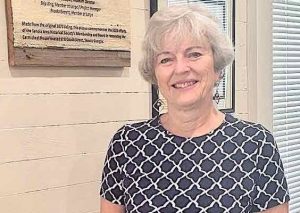By Bethan Adams
[email protected]
Senoia council members approved plans at their meeting Tuesday night to proceed with the future of the water system, a $30,000 project.
Though more expensive than expected, city manager Richard Ferry said the price is reasonable compared with the work the city needs to complete.
Increasing water supply is a topic the council has mulled over for years, and the need for action has grown.
“During non-peak demand times–late Fall through middle of Spring–we can supply the city with water absolutely fine,” Ferry said. “But during the summer, when peak demand includes people playing in their yards with water, people using water in pools, in sprinklers, in irrigation systems…we currently provide or supply water from the county. So [the plan] would offset that.”
When first approaching the topic of Hutchinson’s Lake, the city’s primary water source, an initial setback was figuring out what to do with the lake’s lily pads.
Ferry said the lily pads pose a problem by increasing oxygen levels in the water.
“[Increased oxygen levels] are not the best thing for producing water,” Ferry said. “What it also means is your pond is silted up: lily pads can only grow where the water depth is under three feet. That means we’re also bringing a lot of silt into the pond.”
If the city manages to remove the lily pads, as well as increase withdrawal from Hutchinson’s Lake, then it would also need to build a bigger tank. Ferry said the city would build the bigger container off Highway 16, a location it’s had for several years for this purpose.
“It’s a three-pronged attack,” Ferry said to the council. “Get rid of the lily pads, increase water withdrawal [from the lake] and have an elevated water tank.”
He said the first step in the process was making an application to the Environmental Protection Division of Georgia (EPD). After undergoing two series of evaluations, Senoia received a second letter from EPD requiring more information on water and wastewater master plans, a revised water conservation plan, revisions to the drought contingency plan and information on consumptive loss and inter-basic transfers.
“It’s a massive project,” Ferry said. “But it all hinges on the fact that we need to increase our water withdrawal.”
Ferry is hopeful the EPD won’t deny Senoia’s request this far along in the process, but a final answer will come when the city completes these projects.
“If we are denied the withdrawal from the EPD, then we would need to find additional sources of water elsewhere,” Ferry said. “One of the options we have is to just open the valve with Coweta County and have them be the primary supplier.”












Leave a Comment
You must be logged in to post a comment.